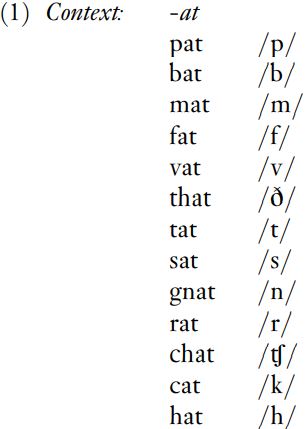

Grammar


Tenses


Present

Present Simple

Present Continuous

Present Perfect

Present Perfect Continuous


Past

Past Simple

Past Continuous

Past Perfect

Past Perfect Continuous


Future

Future Simple

Future Continuous

Future Perfect

Future Perfect Continuous


Parts Of Speech


Nouns

Countable and uncountable nouns

Verbal nouns

Singular and Plural nouns

Proper nouns

Nouns gender

Nouns definition

Concrete nouns

Abstract nouns

Common nouns

Collective nouns

Definition Of Nouns

Animate and Inanimate nouns

Nouns


Verbs

Stative and dynamic verbs

Finite and nonfinite verbs

To be verbs

Transitive and intransitive verbs

Auxiliary verbs

Modal verbs

Regular and irregular verbs

Action verbs

Verbs


Adverbs

Relative adverbs

Interrogative adverbs

Adverbs of time

Adverbs of place

Adverbs of reason

Adverbs of quantity

Adverbs of manner

Adverbs of frequency

Adverbs of affirmation

Adverbs


Adjectives

Quantitative adjective

Proper adjective

Possessive adjective

Numeral adjective

Interrogative adjective

Distributive adjective

Descriptive adjective

Demonstrative adjective


Pronouns

Subject pronoun

Relative pronoun

Reflexive pronoun

Reciprocal pronoun

Possessive pronoun

Personal pronoun

Interrogative pronoun

Indefinite pronoun

Emphatic pronoun

Distributive pronoun

Demonstrative pronoun

Pronouns


Pre Position


Preposition by function

Time preposition

Reason preposition

Possession preposition

Place preposition

Phrases preposition

Origin preposition

Measure preposition

Direction preposition

Contrast preposition

Agent preposition


Preposition by construction

Simple preposition

Phrase preposition

Double preposition

Compound preposition

prepositions


Conjunctions

Subordinating conjunction

Correlative conjunction

Coordinating conjunction

Conjunctive adverbs

conjunctions


Interjections

Express calling interjection

Phrases

Sentences


Grammar Rules

Passive and Active

Preference

Requests and offers

wishes

Be used to

Some and any

Could have done

Describing people

Giving advices

Possession

Comparative and superlative

Giving Reason

Making Suggestions

Apologizing

Forming questions

Since and for

Directions

Obligation

Adverbials

invitation

Articles

Imaginary condition

Zero conditional

First conditional

Second conditional

Third conditional

Reported speech

Demonstratives

Determiners


Linguistics

Phonetics

Phonology

Linguistics fields

Syntax

Morphology

Semantics

pragmatics

History

Writing

Grammar

Phonetics and Phonology

Semiotics


Reading Comprehension

Elementary

Intermediate

Advanced


Teaching Methods

Teaching Strategies

Assessment
Minimal pairs and beyond
المؤلف:
April Mc Mahon
المصدر:
An introduction of English phonology
الجزء والصفحة:
52-5
17-3-2022
1339
Criteria for contrast :the phoneme system
Minimal pairs and beyond
The main business was the construction of rules stating allophonic distributions. These rules in turn were based on the identification of phonemes, for which we relied on the two fundamental tools of predictability of occurrence and invariance of meaning: if two sounds occur in non-overlapping, predictable sets of contexts, and if substituting one for the other does not make a semantic difference, then those two sounds must necessarily be allophones of a single phoneme. On the other hand, if those two sounds can occur in the same environments, producing different words, they belong to different phonemes. This diagnosis is confirmed by the commutation test, which involves putting different sounds in a particular context, to see if minimal pairs result. An example for English consonants is given in (1).

Accidental gaps in the English vocabulary mean that no lexical item *jat, or *lat, or *dat is available. However, minimal pairs can be found in slightly different contexts to establish , /l/, / / and so on as consonant phonemes of English: hence, we find sip zip dip tip lip, or cot dot shot jot. Considering a range of contexts provides evidence for all the consonant phonemes of English, which are plotted on a chart in (2): the voiceless labial-velar and velar fricativesand/M/and/x/ appear in brackets because they are found only in some varieties of English.
, /l/, / / and so on as consonant phonemes of English: hence, we find sip zip dip tip lip, or cot dot shot jot. Considering a range of contexts provides evidence for all the consonant phonemes of English, which are plotted on a chart in (2): the voiceless labial-velar and velar fricativesand/M/and/x/ appear in brackets because they are found only in some varieties of English.

Minimal pairs and the commutation test alone will generally suffice to establish the members of a phoneme system: according to Charles Hockett, a mid-twentieth century American linguist who was very influential in the development of phoneme theory, ‘Minimal pairs are the analyst’s delight, and he seeks them whenever there is any hope of finding them’. However, there are some circumstances where phonemes cannot be established by minimal pairs alone, and we need supplementary criteria for phonemicisation, or phonological units above and beyond the phoneme. In the sections below, we turn to these special cases, and also to a consideration of the phoneme system itself, and its relevance and reality for language users.
 الاكثر قراءة في Phonology
الاكثر قراءة في Phonology
 اخر الاخبار
اخر الاخبار
اخبار العتبة العباسية المقدسة

الآخبار الصحية















 قسم الشؤون الفكرية يصدر كتاباً يوثق تاريخ السدانة في العتبة العباسية المقدسة
قسم الشؤون الفكرية يصدر كتاباً يوثق تاريخ السدانة في العتبة العباسية المقدسة "المهمة".. إصدار قصصي يوثّق القصص الفائزة في مسابقة فتوى الدفاع المقدسة للقصة القصيرة
"المهمة".. إصدار قصصي يوثّق القصص الفائزة في مسابقة فتوى الدفاع المقدسة للقصة القصيرة (نوافذ).. إصدار أدبي يوثق القصص الفائزة في مسابقة الإمام العسكري (عليه السلام)
(نوافذ).. إصدار أدبي يوثق القصص الفائزة في مسابقة الإمام العسكري (عليه السلام)


















